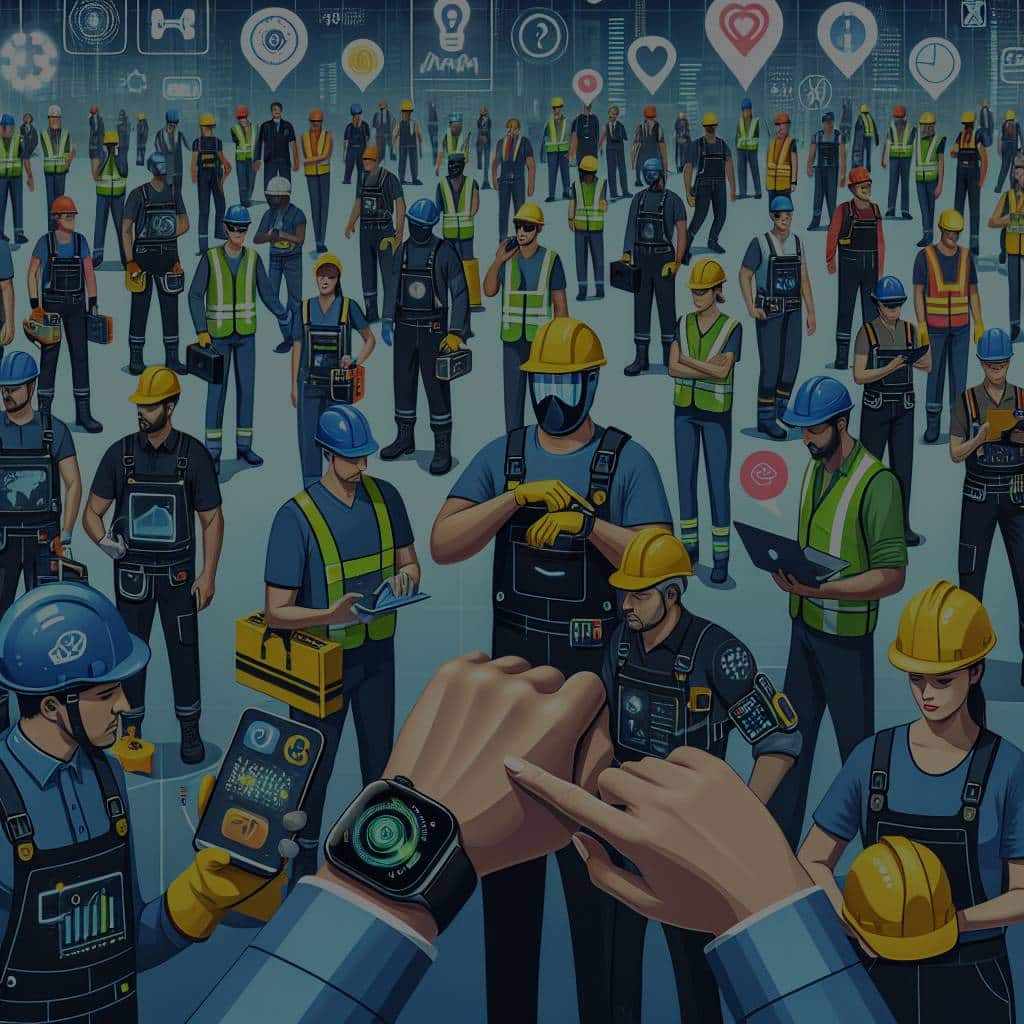What Is the Role of Wearable Tech in Preventing Occupational Injuries?

In the digital age, wearable technology has steadily gained traction, offering innovative solutions to safeguard workers’ health and safety, especially in high-risk environments like construction sites. These smart devices, often worn as accessories or clothing, are becoming increasingly important in reducing occupational injuries and improving health outcomes. By collecting and analyzing data, wearables can help identify potential risks and promote safer work practices. In today’s article, we’ll explore the role of wearable technology in preventing workplace injuries.
The Emergence of Wearable Technology in the Workplace
Wearables are no longer confined to tracking fitness metrics or delivering smart notifications; they’ve been reengineered into powerful tools that can potentially transform the safety landscape in various work settings.
En parallèle : How to Create an Energy-Efficient Home with Smart Technology?
These devices, mostly in the form of watches, bands, vests, and even smart goggles, have been designed to monitor employees’ health status, track their movements, and alert them to potential dangers in real time. In sectors with high injury rates, such as construction, manufacturing, and logistics, the use of wearable tech in risk management and injury prevention is gaining momentum.
Companies are realizing the potential of wearable technology, not only in ensuring workers’ safety but also in boosting productivity, reducing downtime, and cutting healthcare costs. By proactively addressing health and safety concerns, employers can create a safer and healthier work environment that benefits everyone.
A découvrir également : How Are AI Algorithms Improving Prediction of Severe Weather Events?
How Wearable Tech Helps Prevent Injuries
Wearable technology’s role in preventing occupational injuries is multifaceted. From real-time risk warnings to health monitoring, these devices offer a wealth of possibilities for keeping workers safe.
For instance, some wearables enable worker to worker communication, allowing employees to alert each other to imminent dangers. Other devices monitor vital signs, alerting workers to potential health issues that could put them at risk.
In high-risk industries such as construction, wearables can provide real-time feedback about physical strain, helping prevent musculoskeletal injuries. These injuries, often resulting from repetitive tasks, heavy lifting, and awkward postures, are common in many workplaces. Wearable devices have the potential to significantly reduce these risks by providing data that can help workers adjust their movements or take necessary breaks.
The Role of Data in Wearable Technology
Wearable technology is as much about data as it is about devices. These gadgets generate a wealth of information that, when properly analyzed, can provide valuable insights into workplace safety.
For instance, by tracking movements and monitoring vital signs, wearables can help identify patterns that may indicate a risk of injury. This data can be used to develop preventative measures, such as redesigning work processes, implementing new safety protocols, or providing targeted health and safety training.
Furthermore, wearable tech can help track recovery times following an injury or illness. By continually collecting data, these devices can help health professionals understand how well a worker is recovering, allowing for more personalized and effective treatment plans.
Leveraging Wearable Tech for Sports and Athletes
It’s not just in traditional workplaces where wearables are making a difference. In the sports industry, wearable tech is increasingly being used to prevent injuries and improve athlete performance.
Athletes often push their bodies to the limit, making them prone to a range of injuries. Wearables can help identify when an athlete is overtraining or not getting enough rest, both of which increase the risk of injury. By tracking metrics such as heart rate, sleep patterns, and exercise intensity, these devices can help athletes better understand their bodies and adjust their training accordingly.
Moreover, some wearables can monitor biomechanics, providing real-time feedback on an athlete’s form and technique. This can prevent injuries by helping athletes correct improper movements that may cause strain or damage.
Future Prospects: Wearable Technology and Occupational Safety
As technology continues to advance, the potential for wearable tech in preventing occupational injuries looks promising. With devices becoming more sophisticated, they are likely to play an increasingly significant role in promoting health and safety in the workplace.
The future may see the development of more specialized wearables tailored to specific industries or tasks. Additionally, advances in data analytics could allow for more nuanced understanding of risk factors and more effective preventative measures.
While the adoption of wearable tech in the workplace is not without challenges – such as privacy concerns and cost issues – the benefits it offers in terms of injury prevention make it an exciting area of development. As more organizations realize the value of these technologies, it is likely that wearable tech will become a standard tool in promoting occupational safety and health.
Advances in Wearable Tech for Workplace Safety
The evolution of wearable technology is paving the way for a safer future in the workplace. The new generation of devices is becoming more powerful, versatile, and user-friendly. These advanced gadgets are being utilized to mitigate workplace injury risks in innovative ways.
Wearable devices like smart watches and fitness bands have evolved into sophisticated tools that can track a wide array of metrics. They can monitor vital signs such as heart rate, body temperature, and blood pressure in real time, enabling early detection of potential health issues. Moreover, some devices are capable of detecting falls or sudden impacts, promptly alerting both the worker and management to potential accidents.
Beyond health monitoring, wearable technology can also contribute to ensuring safer work practices. For example, smart glasses can overlay information onto the worker’s field of view, guiding them through complex tasks and reducing the risk of errors. These devices can also enable remote guidance, with experts providing real-time instruction from a separate window, reducing the need for in-person interactions in potentially hazardous situations.
Moreover, wearable devices can play an essential role in the prevention of musculoskeletal disorders, common workplace injuries in industries like construction and manufacturing. These ailments are often caused by overexertion or repetitive movements. Wearable tech can monitor a worker’s posture, force exertion, and repetitive movements, providing data-driven feedback to prevent injury.
The Challenges and Solutions in Implementing Wearable Tech
While the benefits of wearable devices in reducing workplace accidents are evident, the implementation of this technology is not without its challenges. Privacy issues are a significant concern, with workers wary of being constantly monitored. It’s essential for companies to establish clear policies that respect employees’ privacy while making use of the valuable safety data that wearables can provide.
The cost of investing in wearable tech can also be a deterrent for some businesses. However, it’s worth considering the long-term benefits of these devices in reducing workers comp and healthcare costs. By preventing workplace injuries, companies can save significantly in the long run.
In order to overcome these hurdles, it is critical to involve workers in the decision-making process. By educating employees about the benefits of wearable technology and addressing their concerns, workplaces can foster a culture of safety and wellness.
Conclusion: The Future of Wearable Tech in Occupational Safety
In conclusion, wearable technology has the potential to revolutionize the landscape of occupational safety. Harnessing the power of data, these devices can provide real-time insights and proactive solutions to prevent workplace injuries.
As more industries recognize the value of wearable tech in promoting worker safety, it’s likely that these devices will become an integral part of health and safety protocols. With advancements in technology, we can anticipate more specialized wearables tailored to the needs of various industries.
Amid challenges such as privacy and cost, the journey towards widespread adoption of wearable tech in workplaces may be gradual. Yet, the benefits they offer in terms of injury prevention and worker safety make them a promising solution. As technology continues to evolve, so will the possibilities for a safer and healthier work environment, driven by the power of wearable tech.
